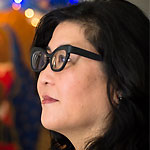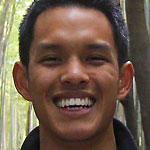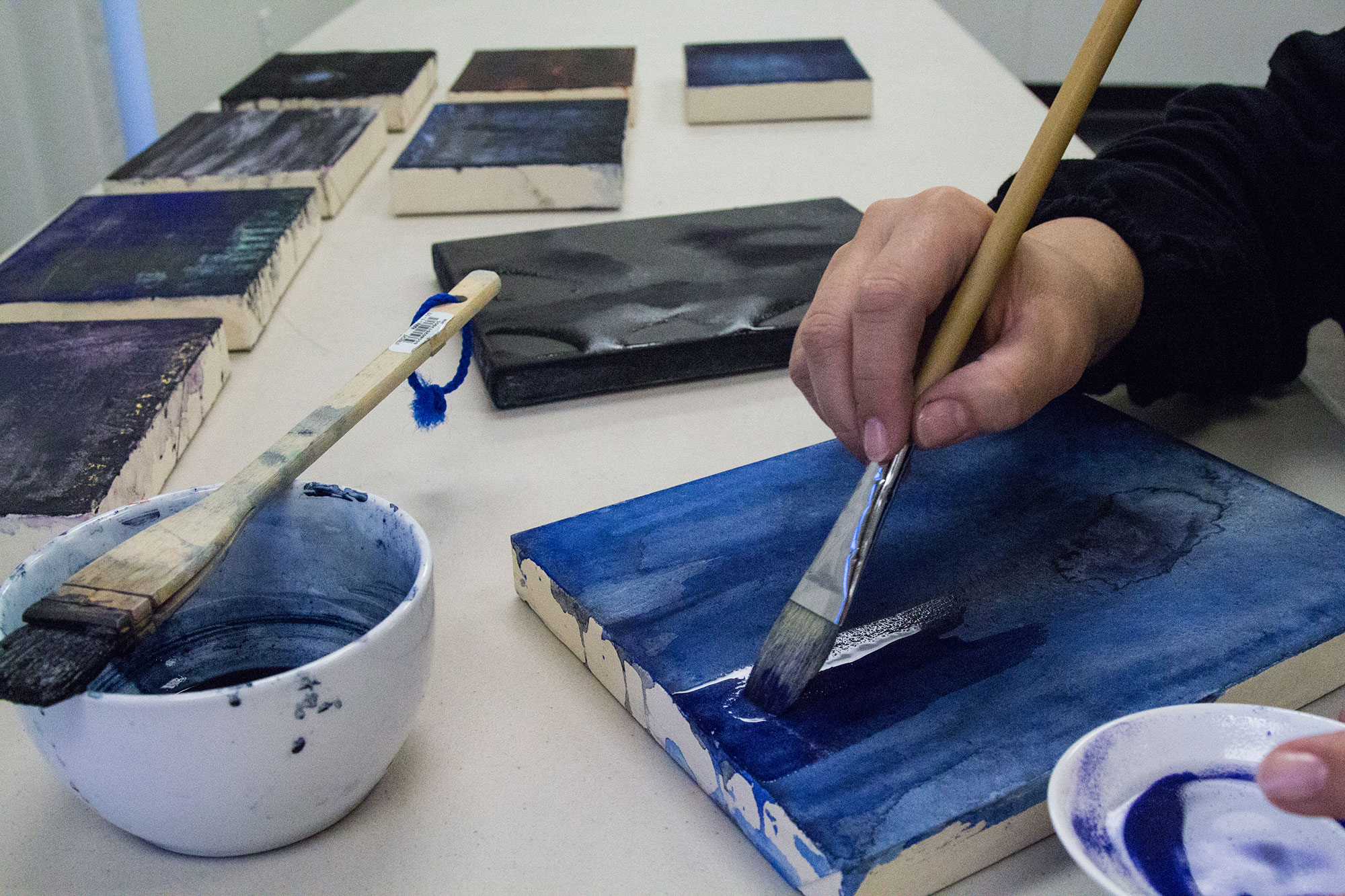
In 1929, Azusa Setsuda was 31 years old with six children, including a newborn baby, when her husband died from the flu. A picture bride from Japan with an eighth-grade education and almost no English skills, she was taken advantage of and ended up selling the family restaurant and bakery in Little Tokyo, Los Angeles, for well under market price.
In order to survive, she turned to Japanese Baptist Church, a Japanese American congregation in Boyle Heights, California. The Reverend Haruye Shibata and his family loved and cared for her and her family in a profound, life-changing way.
Azusa Setsuda was my grandmother. Despite the many tragedies of her life, she embodied God's love and grace in a way unlike any other person I've ever known. She began a spiritual legacy for our family that would guide me for the rest of my life. Possibly the greatest compliment my mother ever gave me was that I reminded her of my grandmother.

Grandma (Obaachan) always wore a dress, pantyhose, and a gingham apron, and gave a bone-crushing hug when she greeted you at her front door. We had a substantial language barrier, but it was her actions, more than her words, that demonstrated how much she loved us. The way she showed her love was an integral part of our Japanese culture and the seed that would grow into my visual abstract expressions of God.
My grandmother's church eventually became two congregations: a Japanese-speaking congregation and an English one. The English congregation took on the new name of Evergreen Baptist Church-Los Angeles (EBCLA) and later moved to its present location in Rosemead.
As I was preparing to return home to LA after finishing graduate school, I had a conversation with Melvin Fujikawa, an old friend who was joining EBCLA as worship pastor that year. He told me about a church community that was looking to incorporate more of the arts and welcome women to positions of leadership. In September of 1996, my life came full circle when I became the third generation in my family to call this church my spiritual home.
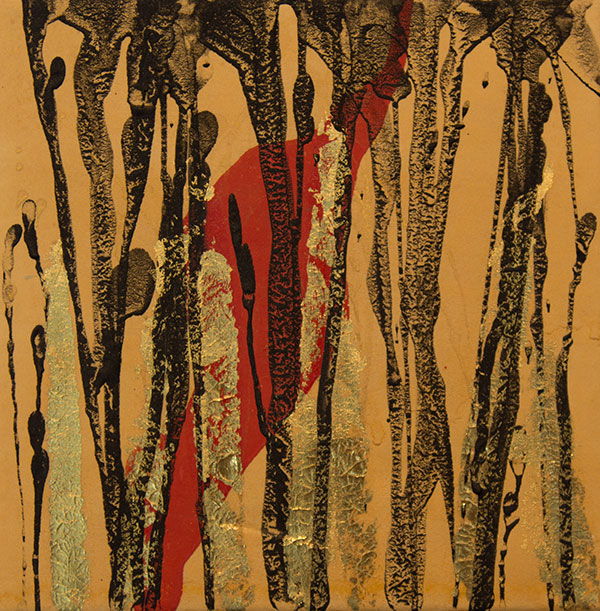
Under the leadership of the Rev. Dr. Ken Uyeda Fong, the pastoral staff at EBCLA was poised to create new paradigms of church and take risks. This was an artist's dream! My undergraduate degree was in studio art, and painting was, and is, my greatest passion. My first project at EBCLA involved a large canvas that would evolve over the period of Advent, with new developments each Sunday that reflected the sermon. My work was largely abstract and process-oriented; I couldn't offer finished images in advance. Ken and Melvin trusted me and let me run with my ideas.
However, that came with much head-scratching from many, including Ken. He asked, "Can you talk about your work?" I replied that as an abstract painter, I was mentored to say little about the work, because it should speak for itself. I want the viewer to sit with the art first, experiencing what it evokes for them. I want them to process their own ideas before I talk about my intentions.
Mystery has often been lost in evangelical culture by us spelling everything out; after being in church my whole life, and completing a Master of Christian Studies degree, I often find that the more I know, the less I know.
So much of the beauty of God cannot fit into a PowerPoint presentation. We cannot explain the mystery of the Trinity, as hard as we may try. It is in the midst of the mysteries, questions, and doubts, where the roots of faith take hold and grow deep. They can anchor us in difficult situations, when platitudes offer no solace.

As EBCLA continued to interweave art into their liturgy, they also integrated art into their new building project, which included a café intended to show art on a rotating basis — art by both children and adults. Miller Fong, the lead architect for this project and longtime church member, made sure that the budget included funds for permanent, original art. Thank God! Thoughtfulness about aesthetics and value for original art in the church meant progress. I received the news that I had been commissioned as the artist to complete a project commemorating the church's 75th anniversary that would live in its permanent collection — an incredible honor.
But struggling as artists often do — working a full-time day job, assisting my aging parents, and living across town from the church — completing the series of paintings would become a 10-year odyssey. This was no ordinary commission — it represented 75 years of rich history, including the church's survival throughout the incarceration of Japanese Americans during World War II, and a fire that nearly destroyed the Boyle Heights building. And it was rooted in my grandmother's history and my own spiritual legacy. Each painting needed to feel deeply complete, both aesthetically and spiritually.
The historical art series is an example of a church taking the risk to portray their history in an abstract manner.

It takes vision and guts to display art at church and to encourage its creation. But it can work. Every church needs visionary leaders, as well as more artists. My hope is that churches will continue to educate congregations about art — how art has a rich history in the Christian tradition and how we can express our own stories, while striving to achieve the same standards of excellence that we do outside the church. Art education can promote appreciation and dispel fear; it is the way that more people can access art and appreciate its spiritual nature. God deserves that.
I have made my way from EBCLA to St. John's Cathedral, an Episcopal church, where I sought a more quiet posture of listening and liturgy. It is a beautiful Romanesque Revival cathedral with high ceilings, lots of marble, beautifully-crafted wood and mosaic work, organ music, incense, and multiple processions per service. St. John's embraces art almost seamlessly, because it has never lost its connection to its creative history. The senior priests are knowledgeable about the arts and carry deep sensibilities about their importance. Their openness and appreciation allow beauty to flourish in our community.

Last year, I helped organize our first celebration of Asian Pacific Islander culture. The clergy were willing to invest significant resources into this Sunday worship service, including professional lion dancers and a classical Korean music and dance troupe. They worked alongside our committee and trusted us, and new forms of worship entered this European-style cathedral to many people's great delight.
The Stations of the Cross are set up in our sanctuary every Lenten season at St. John's. Last year, a series of powerful photographs was presented by one of our parishioners; this year, there was a series of intriguing yet meditative, stylized portraits. In conjunction, I also had the privilege of coordinating a Lenten Film Festival, screening three provocative films that challenged us to examine what it means for Jesus to be fully human as well as fully divine. We hope that we will have enough financial support during a future Lenten season, so I can create a new Stations of the Cross series using nihonga materials — a bucket list dream of mine.
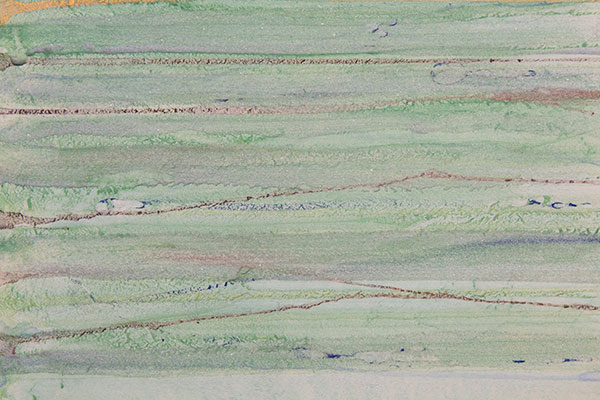
I remain connected to EBCLA as they graciously rent me studio space. I recently visited their new historical center, which houses historical photos, a few artifacts, the history series paintings, and the infamous 1942 U.S. government notice that was posted at the church, informing all Japanese people that they were to report to "assembly centers". It was sobering to stand in front of it. But I also experienced a deep sense of joy, knowing that despite all the hardships, God sustained a great community that grows and still thrives — and the images told that story to me.
I am encouraged by the increasing number of conversations about art and its place in churches. May artists continue to seek excellence in their craft out of love and gratitude for their Maker, and may places of worship welcome them with an openness to seeing the world more brilliantly.


A NOTE FROM THE ARTIST:
This historical art series will always hold a special place for me, because it illustrates the love and faithfulness of God throughout time and in turn, the love and faithfulness of His beloved, including my grandmother.
The media used are Japanese mineral pigments and gold and silver leaf, including soil from the Poston, Arizona internment camp in the painting that represents the 1940s, and soil from EBCLA, in the final painting that embodies the new millennium and beyond. The majority of people from the original church were incarcerated in Poston, where I gathered the soil on an anniversary pilgrimage trip with my mother and 700 others.
